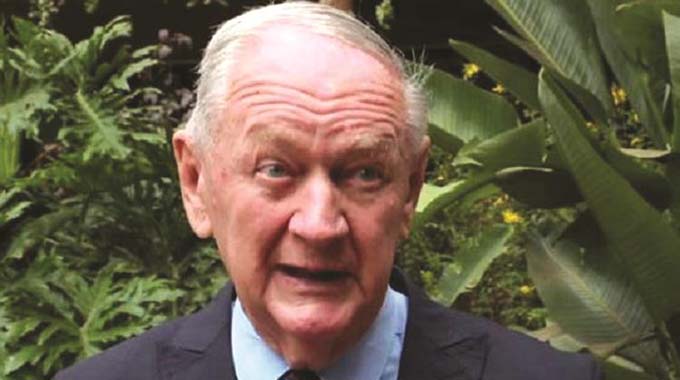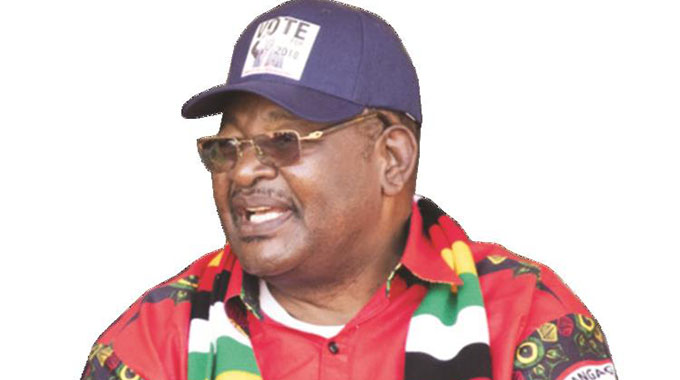EDITORIAL COMMENT: We can fix Harare traffic chaos, in stages if need be

THE growing and near intolerable traffic congestion in central Harare and surrounding areas is a direct function of the rapidly growing number of private motor cars, the inadequate public transport especially in terms of comfort and convenience, and the growing business area that arises from the economic expansion.
To this needs to be added the paucity of ring roads. Almost all traffic in Harare that moves between suburbs, that moves between the main industrial areas and many residential areas and even between the extreme ends of the largest block of commercial development has to drive straight through half a dozen roads that slice through the old city centre and need traffic light controls.
There are additional problems, largely to do with inadequate maintenance of traffic lights and the refusal to implement proposals almost 50-years-old to widen half a dozen choke points around the edge of the old city centre, which could produce immediate improvements along with enforcement of traffic laws and regulations.
Red herrings are the kombis and buses, which if anything relieve congestion since a kombi carries the same number of people as 18 private cars and which, these days of enforcement, usually block parking spaces, not traffic lanes. In fact a major solution will require many present car drivers to move to public transport, which implies a significant upgrade of that sector to be competitive.
When we look at the huge number of private cars, which include pick-ups and SUVs, that clog the city centre and its approaches during peak hours, we should not assume that all, or even a substantial majority, are people wanting to terminate their inward journeys in the city centre or are leaving the city centre.
For a start there are simply not enough parking spaces for all those cars and Harare City Council has made progress in ensuring that street parking is largely devoted to customers of businesses, rather than owners and staff of businesses, with the very high parking charges now in place and the high level of enforcement of parking rules.
In fact, the street parking is one of the few areas where by-laws are enforced, which suggests that other by-laws could be enforceable if anyone in Town House cared. Owners of several of the higher-rise buildings have commented that there is a lot of spare space in their buildings, as so many businesses have been able to move out of the city centre into the suburbs, and especially the inner ring of suburbs around the city centre where they have been able to convert housings, or demolish housing and build single company office blocks, all with on-site parking.
There is almost a direct relationship in the city centre between occupancy levels of major buildings and the amount of on-site parking these days.
So a lot of traffic congesting the city centre are cars driven by people who, if there was an alternative, would not be driving through the city centre.
To this must be added the choke points around the outskirts of the old city centre, choke points identified in many cases before independence.
Samora Machel Avenue has a four-lane section each end, and a six lane section in the central seven or so blocks, although the road reserve is the same width throughout.
It would be cheap and easy to continue the 1960s and 1970s widening at each end, with just a modest number of parking bays lost.
The western entrances and exits to the city centre are exceptionally limited over the fact that Nelson Mandela Avenue stops short three blocks from the city centre edge.
In the 1970s, the owners of around three small and cheap buildings were warned that one day the council would buy them out at the then adjusted value, so they should not redevelop the stands.
Almost 50 years later the council still has not bought them out so that traffic on Nelson Mandela and Jason Moyo Avenues can flow freely to and from Gamal Abdel Nasser Road in and out of the city centre.
The eastern edges are also ticky, but without the same sort of inexpensive solutions. Robson Manyika Avenue is a wonderful inwards road, that ends abruptly half-way through the city centre and cannot be extended, but on the other hand the fact that Jason Moyo Avenue starts several blocks from the edge tends to take the load, although it does need its western choke point cleared.
There is no room for flyovers at the horror intersection where Kenneth Kaunda Avenue, Julius Nyerere Way, Fidel Castro Road and Seke Road all meet, but a north-south or east-west tunnel could be dug to at least alleviate the major congestion.
But in the end the only real solution will be to do what major cities have done in most developed countries, offer a first-class public transport system that encourages many, including the rich, to leave their cars at home or suburban parking areas and take trains and buses to work.
The Government is gradually building up the Zupco fleet, and Harare City Council needs to take control of the terminuses, as it did with the parking, and then the two and private operators with suitable vehicles need to create a valid alternative to the car, not just something for those who walk.
This would have to include bus lanes, so that one major incentive to drivers to leave their car at home or a park-and-ride guarded car park, with costs much lower than the city centre, would be the far quicker journeys.
A decent public transport system cannot be created overnight, but we can start tomorrow by enforcing existing by-laws over vending and touting in the existing terminuses, as well as posting municipal marshals.
Zupco can sit down with reputable bus companies and kombi associations to work out the modern network of routes, rather than just use the ones inherited, and work out the fare structures that are fair.
The arrangements can be upgraded as more new buses and kombis are imported or, better still, made locally and the relative comfort of the fleet improves. We should be starting the planning with what we want and then work backwards to what we have, and make sure every change is in the right direction.
And, while we suffer let the city council fix its traffic lights and let us all concentrate on keeping the traffic laws.










Comments